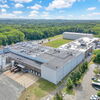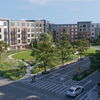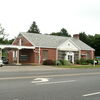Processing Your Payment
Please do not leave this page until complete. This can take a few moments.
-
News
-
Editions
-
- Lists
-
Viewpoints
-
HBJ Events
-
Event Info
- 2024 Economic Outlook Webinar Presented by: NBT Bank
- Best Places to Work in Connecticut 2024
- Top 25 Women In Business Awards 2024
- Connecticut's Family Business Awards 2024
- What's Your Story? A Small Business Giveaway 2024 Presented By: Torrington Savings Bank
- 40 Under Forty Awards 2024
- C-Suite and Lifetime Achievement Awards 2024
- Connecticut's Health Care Heroes Awards 2024
-
-
Business Calendar
-
Custom Content
- News
-
Editions
View Digital Editions
Biweekly Issues
- April 15, 2024
- April 1, 2024
- March 18, 2024
- March 4, 2024
- February 19, 2024
- February 5, 2024
- January 22, 2024
- January 8, 2024
- Dec. 11, 2023
- + More
Special Editions
- Lists
- Viewpoints
-
HBJ Events
Event Info
- View all Events
- 2024 Economic Outlook Webinar Presented by: NBT Bank
- Best Places to Work in Connecticut 2024
- Top 25 Women In Business Awards 2024
- Connecticut's Family Business Awards 2024
- What's Your Story? A Small Business Giveaway 2024 Presented By: Torrington Savings Bank
- 40 Under Forty Awards 2024
- C-Suite and Lifetime Achievement Awards 2024
- Connecticut's Health Care Heroes Awards 2024
Award Honorees
- Business Calendar
- Custom Content
New Normal: New Haven office market shows some positive signs, but challenges remain
 PHOTO | COSTAR
Downtown New Haven's office vacancy rate has increased during the pandemic, but many landlords are converting former office space to lab use to take advantage of the city's booming bioscience sector.
PHOTO | COSTAR
Downtown New Haven's office vacancy rate has increased during the pandemic, but many landlords are converting former office space to lab use to take advantage of the city's booming bioscience sector.
For the first time in two years — as COVID numbers show signs of abating — employers have been cautiously bringing more employees back to the office this spring.
But in the wake of 24-plus months of remote work, some employees are returning — at least initially — to workplaces that are offering greater flexibility, ranging from complete remote opportunities to hybrid models.
That’s good news to many employees. A PwC survey found that 72 percent of workers wanted to work from home at least two days a week even when they return to the office.
However, those numbers might not be welcome news to landlords who have weathered the turbulence of the pandemic only to confront the continuing uncertainty of office demand.
A national PwC survey of executives found that almost one-third (30 percent) expect to need less office space in the next three years. And 24 percent of all professional jobs in the U.S. and Canada are now available for permanent remote work, according to Ladders’ 2022 first quarter “Quarterly Remote Work Report.”
In a city like New Haven, office demand has been impacted by dual challenges.
The first has been the explosive growth of the life sciences industry, which has created far greater demand for lab space. That has incentivized the conversion of office buildings to support life science ventures or multifamily use, decreasing the overall availability of traditional office space.
The second challenge was a trend for some companies to seek office space in suburban communities, said Kristin Geenty, commercial real estate broker with Branford-based Geenty Group.
“When the [COVID] lockdown happened, people went to the suburbs; they wanted more space,” Geenty said. “They wanted to be closer to where people lived so employees could [more easily] come in when they returned to work.”
Even in the suburbs, however, Geenty sees a shrinking office footprint. Office space under 5,000 square feet is being filled, she said, but there is much less demand for larger space, as many companies are testing hybrid models.
“The footprint is 50% of what it was pre-pandemic,” she said.
That’s also put pressure on suburban office landlords, Geenty said, to offer greater lease flexibility — including features like rent abatements in the event of another lockdown, or early termination clauses for longer-term leases.
Similar challenges to entice tenants exist for New Haven’s central business district office property owners, said David Hansen, a New Haven-based office broker with CBRE.
“For longer-term deals of five to 10 years, landlords are contributing capital to [amend spaces] to fit those clients’ needs,” he said.
More vacant space
Hansen said he has been encouraged by interest and activity he’s seen around office space over the past year, even as some clients grapple with their spacing needs.
Over the past year, he’s leased about 130,000 square feet of space in downtown New Haven, about half office and half lab space. In part, those moves were motivated by the opportunity to relocate to a building with better amenities. Despite the uptick in office activity, Hansen said, tenant demand in the city’s downtown is still not where it should be.
According to Colliers New Haven market data, the vacancy rate for New Haven Class A office space was 21.8% at the end of the fourth quarter of 2021, but Class A office space in the central business district was better at 14.1%.
By contrast, New Haven’s neighbor to the south, Stamford, saw office leases increase overall by 23 percent in 2021, with more than 1.7 million square feet of new office space leased, according to CBRE figures.
By comparison, said Chris Ostop, manager director of commercial brokerage firm JLL, New Haven has a much smaller office inventory than Stamford and is much less dependent on major corporate tenants.
“There’s only [a handful] of Class A office buildings in New Haven, including three in downtown and two on Long Wharf,” he said.
Largely, he said those buildings are home to smaller regional or local financial services, legal and accounting firms that may be less likely than corporations to transition to hybrid models.
By comparison, according to CBRE survey data, more than 87 percent of large companies nationally plan to use a hybrid model.
Looking ahead, Ostop said life sciences will drive New Haven’s future and its office market.
According to a Colliers fourth quarter report, nearly 25 percent of the office and lab space was leased by life sciences companies. And with rates for lab space approaching $40 per square foot — significantly higher than the low-to-mid $20-per-square-foot range for office space — more property owners are reconfiguring their properties to meet market demand.
The recently converted office space at 55 Church Street — now known as the Elm City Bioscience Center — offers more than 37,000 square feet of leasable space, with two startup life sciences companies inking lease agreements last year.
Similarly, the former Higher One headquarters building at 115 Munson Street has been converted to Winchester Works, an office and lab space.
Ostop points to Yale’s new Center for Cooperative Research to enhance collaborations with partners in the community and industry as signs of the future. Yale — and the startups it spins out — is only going to grow, he said.
Kristin Geenty agrees.
“The biggest opportunity and challenge for the office market in New Haven is adaptive reuse,” she said. “Whether that’s biotech or something more flexible for an office working model.”

2022 Giving Guide
This special edition informs and connects businesses with nonprofit organizations that are aligned with what they care about. Each nonprofit profile provides a crisp snapshot of the organization’s mission, goals, area of service, giving and volunteer opportunities and board leadership.
Learn more
Subscribe
Hartford Business Journal provides the top coverage of news, trends, data, politics and personalities of the area’s business community. Get the news and information you need from the award-winning writers at HBJ. Don’t miss out - subscribe today.
Subscribe
2024 Book of Lists
Delivering Vital Marketplace Content and Context to Senior Decision Makers Throughout Greater Hartford and the State ... All Year Long!
Read Here-
2022 Giving Guide
This special edition informs and connects businesses with nonprofit organizations that are aligned with what they care about. Each nonprofit profile provides a crisp snapshot of the organization’s mission, goals, area of service, giving and volunteer opportunities and board leadership.
-
Subscribe
Hartford Business Journal provides the top coverage of news, trends, data, politics and personalities of the area’s business community. Get the news and information you need from the award-winning writers at HBJ. Don’t miss out - subscribe today.
-
2024 Book of Lists
Delivering Vital Marketplace Content and Context to Senior Decision Makers Throughout Greater Hartford and the State ... All Year Long!
ABOUT
ADVERTISE
NEW ENGLAND BUSINESS MEDIA SITES
No articles left
Get access now
In order to use this feature, we need some information from you. You can also login or register for a free account.
By clicking submit you are agreeing to our cookie usage and Privacy Policy
Already have an account? Login
Already have an account? Login
Want to create an account? Register
Get access now
In order to use this feature, we need some information from you. You can also login or register for a free account.
By clicking submit you are agreeing to our cookie usage and Privacy Policy
Already have an account? Login
Already have an account? Login
Want to create an account? Register






0 Comments